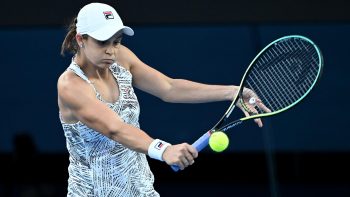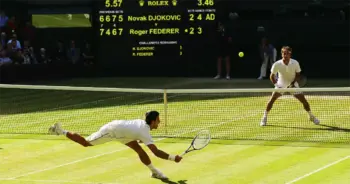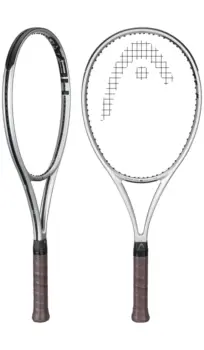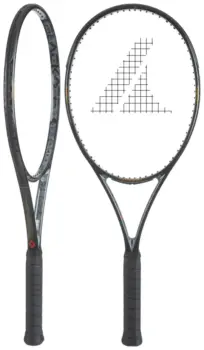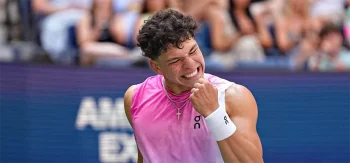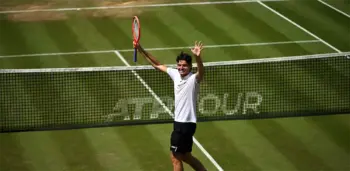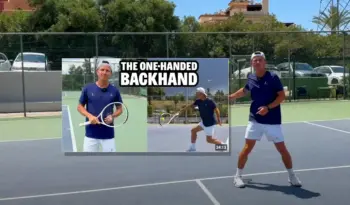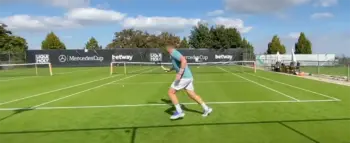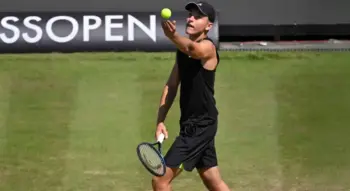Our guest writer Evan Gaudreau is back with an interesting post covering the Australian Open 2022 Women’s Final analysis. I hope you like it!
Australian Open 2022 Women’s Final analysis: Barty d. Collins 6-3, 7-6 (7-2)
I received a text from a buddy. He loves the women’s game more than the men’s because he likes the rawness of the points, and to be honest, it can be more exciting to watch, at times, because they play so many more risky patterns. I’d like to say comparing the men’s game to the women’s is like comparing chess to checkers. It’s not. But one women’s player is very smart.
Ashleigh Barty.
Steven! This piece is for you.
Australian Open 2022 Women’s Final Analysis
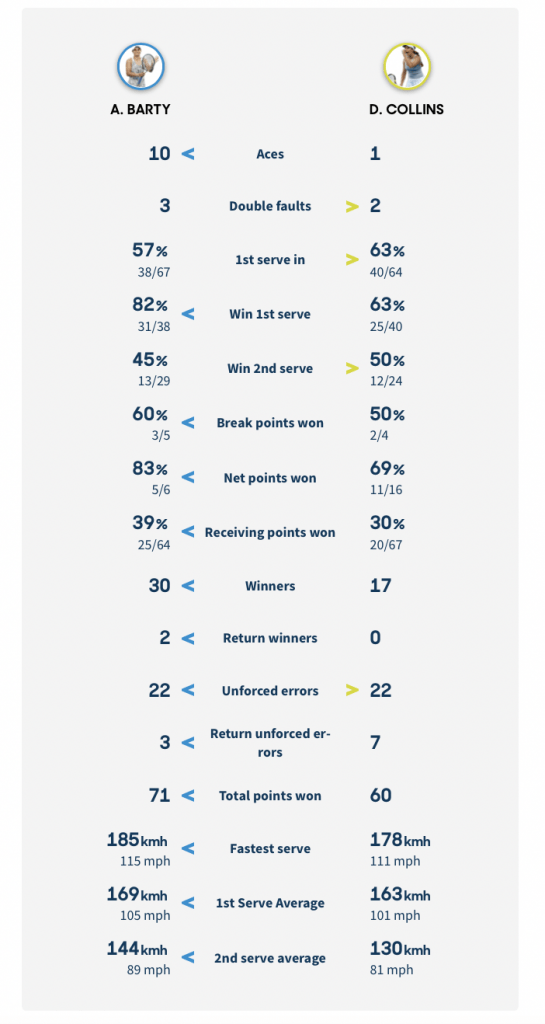
When I started watching the match, I was thinking about what different things I was going to focus on. Rally length? Winner to unforced errors ratio? Points won and lost ratio, which wasn’t too interesting. But as I got midway through the first set, I noticed a pattern of unreturned serves. ESPN analysts brought this up in the second set, probably by their stat machine, Infosys.
Why? Why was she missing so many returns? Was she being too aggressive? Should she move back?
It was technical, for starters. Collin’s hands were too high on her return. When she approached the ball, the hands were too high, causing an “over the top” approach and resulting in many errors on the return.
Simple fix, right? Easy stat.
Maybe not, especially when you’re minds going 100 mph and you’re playing for your first Grand Slam trophy AND it’s on your opponents’ turf AND that’s what you’re using for motivation, denying your opponent that opportunity. Shame. Shame on you. (And you have the thought in your head that YOU are the better player. YOU should win this match). Collins strikes me as the player who has to go to those dark places for motivation.
Anyway.
Barty makes you play badly
Barty had a lot to do with those missed returns. She mixed up pace, location, and ball flight.
Keeping the ball lower messed with Collins’ timing. Her ball flight stays down on her serve, a bit lower than most because of the way she approaches the ball, at least during the final. To get the ball to stay down on the serve and make Collins “drop” her hands, she approaches the ball with a slice cradle of the wrist after contact, as opposed to a more downward cradle on the finish, which causes the ball to “pop” up a bit more. Think of skimming a rock at the pond. If you hit the water downward, the flat rock will fly higher up in the air. If you throw the rock sidearm, it will stay low as it skips farther away. (Does anyone even skip rocks anymore?)
Collins might have been able to move back on the return. But wouldn’t that make her hands have to go even lower?
*Barty could have countered with wide serves, in that case,*
If you re-watch the match, look for that.
Barty’s Serve Patterns
Another tactic was Barty’s use of patterns on her service location.
First game. T,T,W,W,T,T
Second game. W,W,T,W,W
Third game. M,T,W,W,T,T,T,W,W,W
Fourth game. T,W,W,T,W
(T-T-serve, W-wide serve, M-Middle)
Barty’s second serves varied also. She would mix location. If she went T on the first, she went wide on the second and vice versa. She would also “double-up” the location. Very sneaky.
Do I have to do all the homework for you, Steven?
Fine! Let’s look at return games!
Barty’s Return Games
I’m not going to do all the work. When you re-watch the match, take a pencil and paper and start jotting down what spin Barty returned with and the locations. She mixed topspin with power drives and chips. And she mixed up where she attacked, keeping Collins off balance on her first ball after the serve.
Pay attention especially to the Deuce side return patterns, Stephen.
She opened the set by attacking down the line to Collins’ backhand and then she alternated forehand crosscourts with topspin and forehand chip, which messes with the timing (if
First Set 6-3
Point total. Barty 20/ Collins 17
If you didn’t notice Barty’s manipulation, you probably noticed the streaks on points won and lost. 7 out of the 9 games in the first set had streaks of one player winning 3 or 4 points in a row. Mary Jo pointed out that Collins was a streaky player. I’m not sure if that’s entirely true, but I will say emotional players are streaky.
Second Set – Bad start, but mixing it up
In the second set, I was looking for Collins’ adjustments. Would she change her position on the return or would she move her hands lower? If you can see, her hands did drop a little lower, and she increased her intensity at the point of contact on Barty’s slice backhands.
Barty also made many unforced errors to help Collins jump to a 5-1 lead. This was also a case of playing conservatively on her part and hoping Collins would “go away.”
Easy to point out, but how would you feel if you were playing in a Grand Slam Final, In YOUR home country and be a set away from adding that to your career?
*At 5-1 in the second set, the point total was…
Collins 26/ Barty 9
**As a junior player, when we were down 1-5 in a set, a few mindful coaches taught us to start thinking about the next set, kind of. We were taught to find something that works before the set is over, so you can have the momentum going into the next set. Think about it. Even if you lose the set 6-4, in the last 4 games, you are ahead 3-1. We all know that tennis is a game of momentum.
Barty started using her two-hander more. Her two-hander might not be the strongest on the ladies’ side of the tour, but it does help mix up the pace, making her slice backhand more effective.
Better returns, better returns
Barty started mixing up her returns at this point. She had mostly been chipping the return, but after getting down 1-5, she started hitting more returns with topspin and power at the beginning of the game, giving Collins’ pace, and taking away the time she had been giving her by all the slice returns at the opening of the set. She would use chip later in the return games to mix it up.
Return patterns after being down 1-5
Topspin, Topspin, Topspin, Chip, Chip, Chip
2-5
Held serve.
3-5
Topspin, Chip, Topspin, Topspin, Topspin, Chip
4-5
Held serve.
5-5
Chip, Chip, Chip, Topspin, Topspin
5-6
Held serve.
6-6
Tiebreaker
Chip, Chip, Topspin, Chip, Chip
Barty’s taking away rhythm. You can see a pattern here. Or a change of patterns. Have you ever played against a player who changes spins on returns? It can be annoying. Have you ever felt out of rhythm in a match? Maybe it had less to do with you and more to do with your opponent.
**Takeaways**
Work on mixing up returns in practice. Think simply. Do a two-point combo return pattern. Change the spin on the return (If your opponent double faults continue as if the point didn’t happen, don’t change your pattern on the next return).
On service games, try to stick with a 2-point combo also. First two points use wide serve. Second two use “T” serves or whatever pattern you want to work on.
Once you get comfortable, mix up your combos.
Re-watch the match and look at it a little differently.
Enjoy
-EG

